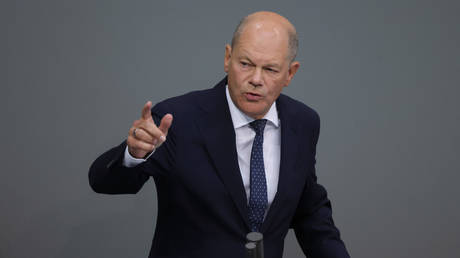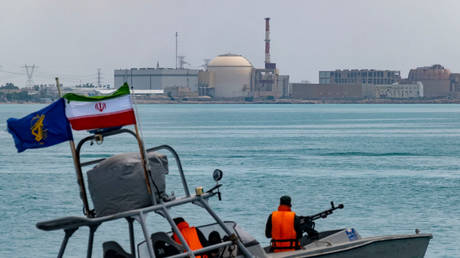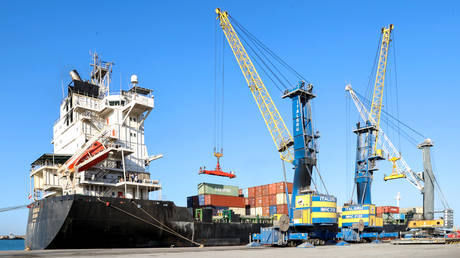There has been a significant increase in container movement via the International North-South Transport Corridor, an Indian government report shows
Vessel traffic via the International North-South Transport Corridor (INSTC), a multimodal transport route developed by India, Russia and Iran, soared by 43% in the 2023-24 financial year, according to an Indian government report. Container traffic in the same period rose by 34%, the report added.
The latest edition of the Economic Survey, a document released annually ahead of the announcement of India’s federal budget for the next fiscal year, revealed a surge in maritime activity, including via Shahid Beheshti Port at Chabahar in Iran, which connects the Indian port of Mumbai to Eurasia as part of the INSTC.
In May 2024, India and Iran signed a ten-year agreement for the operation of Chabahar Port, eight years after establishing the general framework of cooperation. Developed as an alternative shipping route to the Gulf of Aden-Suez Canal route, Chabahar Port is also viewed by New Delhi as a “strategic gateway to unlock India’s trade potential with Central Asia, Russia, and European countries.”
As per the agreement, Indian Ports Global Limited will invest around $120 million in upgrading Chabahar’s port infrastructure. Furthermore, India has offered a $250 million credit line to support jointly identified projects aimed at enhancing Chabahar-related infrastructure, in partnership with Iran’s Port and Maritime Organization.
Read more
Hard to port: India defies Washington’s pressure to deal with Iran
Iran’s first deep-water port, Chabahar is a key component of the INSTC – a multimodal trade route that connects the Indian Ocean and the Persian Gulf to the Caspian Sea via Iran and Azerbaijan, and then extends to northern Europe. The INSTC begins in Mumbai and passes through Bandar Abbas, Bandar-e-Anzali, and Chabahar, before crossing the Caspian Sea to reach Astrakhan in southern Russia. From there, it connects to Moscow and St. Petersburg via rail and road links. Industry experts believe that the INSTC will allow India to bypass Pakistan and gain access to the markets of Central Asia, where Chinese corporations are rapidly consolidating their presence.
Overall, the INSTC is expected to reduce transit times by 40%, cutting average journey times from 45-60 days to 25-30 days, officials from Russia, India, and Iran have said. Additionally, it is likely to decrease freight costs by 30%. While work on the INSTC began in the early 2000s, it has received renewed attention following sanctions imposed by Western countries against Moscow and, previously, against Iran, which disrupted the global maritime industry and increased shipping costs.
READ MORE: Russia-India sea transport corridor operational – New Delhi
Apart from Chabahar, India has also reopened the Eastern Maritime Corridor (EMC), which connects major logistics hubs in Russia’s Far East with India’s southeastern coast. The Chennai-Vladivostok sea route, which connects India’s second-largest container hub to Russia’s Far East, has a history dating back to the 1960s when it was a key trade route between the Soviet Union and India. Officials from both countries stated that the reopening of the maritime link could offer a more cost-effective and time-efficient route for transporting essential commodities such as oil and coal from Russia to India.








+ There are no comments
Add yours